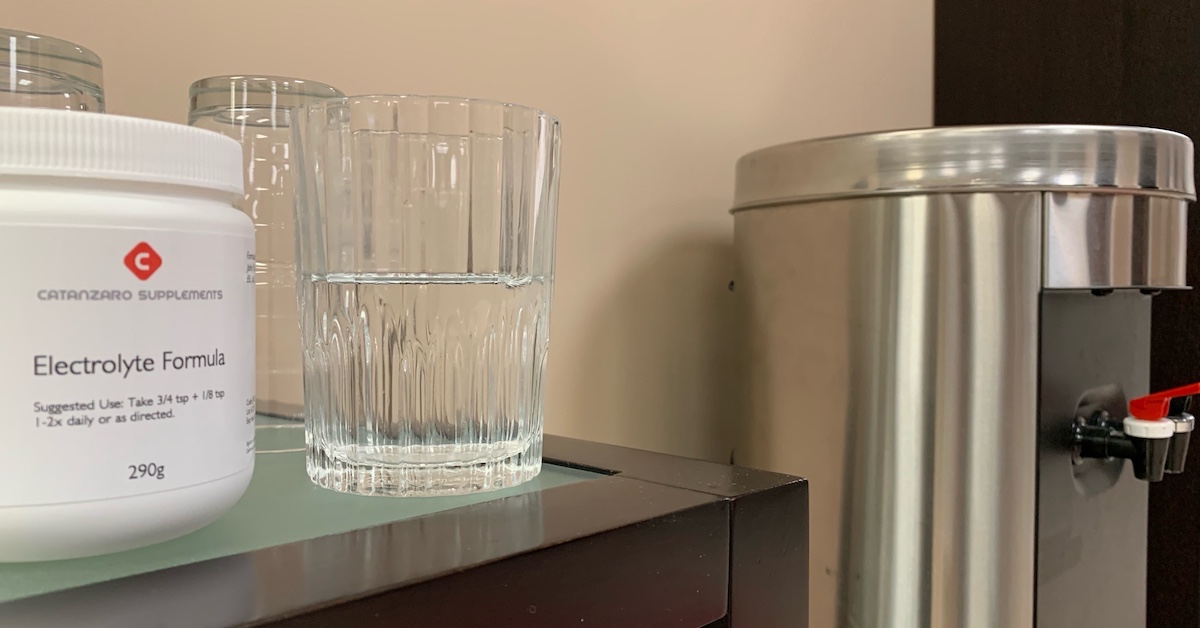In
If you’ve been spinning your wheels and going nowhere in your pursuit for optimal health and fitness, then stop! Doing something simply because you’ve been told to is not good enough.
It’s time to question authority and challenge the establishment!
Five Common Health and Fitness Misconceptions
Let’s start by dispelling five common health and fitness misconceptions. Dare I suggest that…
1. A high fat intake can actually lower body fat!
There are two reasons for this: a) If low fat is consumed, your body retains body fat as a protective/survival mechanism, and b) a high fat intake upregulates key lipase enzymes, which not only break down dietary fat but also body fat (see excerpt below). Of course, a high fat and high carb diet will result in body fat accumulation so this only applies to a low carbohydrate intake.
“The lipase enzyme is a naturally occurring enzyme found in the stomach and pancreatic juice, which is also found within fats in the foods that we eat.
Lipase enzyme digests fats and lipids, helping to maintain correct gall bladder function. As such, these constitute any of the fat-splitting or lipolytic enzymes, all of which cleave a fatty acid residue from the glycerol residue in a neutral fat or a phospholipid. The lipase enzyme controls the amount of fat being synthesized and that which is burned in the body, reducing adipose tissue (fat stores).
The lipase enzyme belongs to the esterases family of proteins. The lipase enzyme is found widely distributed in the plant world (beans and legumes), as well as in molds, bacteria, milk and milk products, and in animal tissues, especially in the pancreas.
In sufficient quantities of lipase enzyme production, lipase can help use fat-stores to be burned as fuel. Indeed, lipase is a rate-determining enzyme, which not only activates the burning of stored body fats but also effectively inhibits fatty acid synthesis, or fat storage!
Hormone-Sensitive Triacyclglycerol Lipase, as it is also known, actually stimulates lipolysis in fat tissues, safely raising blood fatty acid levels, which ultimately activates the beta-oxidation pathway in other tissues, such as liver and muscle. In the liver, lipolysis leads to the production of ketone bodies that are secreted into the bloodstream for use as an alternative fuel to glucose by peripheral tissues.”
2. Reduced thyroid levels (i.e., TSH levels above 5) for a lean individual following a low-carb diet may be normal and healthy!
Now before you throw your chair at the computer, hear me out. As Dr. Ron Rosedale notes in the excerpt below, reduced thyroid levels are not necessarily synonymous with hypothyroidism. Your body chooses to lower thyroid hormones due to an increased efficiency of energy use and hormonal signaling. It is yet another example of how your body adapts and should not be viewed as abnormal.
The knee-jerk reaction in many cases would be thyroid medication, which could potentially decrease lifespan.
“Metabolic rate and temperature has long been connected with longevity. Almost all mechanisms that extend lifespan in many different organisms result in lower temperature. Flowers are refrigerated at the florist to extend their lifespan. Restricting calories in animals also results in lower temperature, reduced thyroid levels, and longer life.
It should be noted that reduced thyroid levels in this case are not synonymous with hypothyroidism. Here, the body is choosing to lower thyroid hormones because the increased efficiency of energy use and hormonal signaling (including perhaps thyroid) is allowing this to happen.
Anything will dissolve faster in hot water than cold water. Extra heat will dissolve, disrupt and disorganize. This is not what I try to do to make someone healthy. It is commonly advised to “increase metabolism” and increase “thermogenesis” for health and weight loss.
Yet how many of you would put a brand of gasoline in your car that advertised that it would make your engine run hotter? What would that do to the life of your car? It is not an increase in metabolism that I am after; it is improved metabolic quality.”
3. Low cholesterol levels will promote aging.
Cholesterol is the raw material for many hormones. If you lower cholesterol, you will lower hormone production… and if you lower hormone production, you increase aging (see excerpt below).
To make matters worse, low cholesterol has been associated with a broad complex of emotional, cognitive and behavioral symptoms including aggressiveness, hostility, irritability, paranoia, and severe depression.
There is also an increase in deaths from trauma, cancer, stroke, and respiratory and infectious diseases among those with low cholesterol levels.
Furthermore, a study in the British medical journal, Lancet, indicates that elderly men die earlier with low blood cholesterol levels.
“The human organism is in a state of dynamic equilibrium, know as homeostasis. One of the main roles in normal homeostasis belongs to multiple feedback loop mechanisms.
Cholesterol is the precursor or the building block for the basic hormones: pregnenolone, DHEA, progesterone, estrogen, testosterone.
Deterioration of the reproductive function, one of the most striking endocrine alterations occurring in aging, is related to a complex interplay of factors. Target organs may become less sensitive to their controlling hormone or may break them down at a slower rate. Hormone levels may change; some increasing, some decreasing and some remaining unchanged.
Many of the diseases that middle-aged persons begin experiencing including depression, abdominal weight gain, prostate, breast and heart disease, are directly related to hormone imbalances.
Conventional doctors are prescribing drugs to treat depression, elevated cholesterol, angina and other diseases that may be caused by hormone imbalance.
A few years ago we found out that some patients who had high cholesterol levels before hormonorestorative therapy (HT) were free of cholesterol problems during therapy. We started pondering as to why this had happened?
In our opinion, when the production of hormones starts to decline our body tries to correct this problem by increasing the production of cholesterol. A similar situation happens to women during pregnancy. When a female’s body needs more hormones for herself and her baby, cholesterol levels are elevated significantly. If a woman’s body is unable to increase the production of cholesterol the risk of an abortion and miscarriages is increased.
Another situation is a low level of cholesterol. If your total cholesterol is less than 160, you have nothing to worry about. Wrong opinion!
A low level of cholesterol means a low production of basic hormones (because of a limited amount of building blocks). Patients with a low level of hormones have life problems that include suicides, criminal behavior, depression, attention deficit disorder, cancer at young age, etc. Low cholesterol is a marker for poor underlying health.
When patients take cholesterol-lowering drugs (CLD) we can surmise that hormonal production will decrease. That’s why many patients on CLD have severe fatigue, fibromyalgia-like pain, depression, high risk of cancer, suicides, weight gain and impotency.
Normally our body tries to keep a normal ratio between different hormones: DHEA/cortisol, estrogen/progesterone, female/male hormones. When we have a malfunction in a feedback loop mechanism we start to have the problems related to the imbalance of hormones (for example: male or female dominance, estrogen dominance, etc.).
Once again, when the production of hormones starts to decline, our body tries to correct the deficiency of hormones by the extra production of cholesterol. It looks like the elevation of total cholesterol serves as a compensatory mechanism for hormonal deficiency.”
4. Aerobic training can increase body fat.
Specifically, long distance, low intensity, rhythmic-type aerobics done for a long duration/distance on a frequent basis can signal the body to store fat.
Your body prefers fat for fuel at lower intensities. It adapts to aerobic activity by storing fat (usually in the hips and thighs) to become more efficient for future use. The more fat you store, the more you can use.
Furthermore, aerobics are associated with increased cortisol levels without a concomitant increase in testosterone (as occurs during strength training) disrupting an optimal testosterone:cortisol ratio. In fact, average testosterone levels are significantly lower in endurance athletes. This, of course, equates to a decrease in muscle and strength along with an increase in (android) body fat, i.e., midsection fat.
5. Static stretching will make you weak.
This has been well documented in the literature, and yet a typical warm-up usually contains some form of (you guessed it) static stretching. The classic Bob Anderson style of stretching before exercise tends to sedate muscles, and research shows that it will decrease power and strength by as much as 30% for up to 90 minutes. By that time, your workout is over! Check out my new book The Warm-Up for more information on this topic.

Sometimes you need to take a sledgehammer and crush what’s written in stone!
We’ve been told to reduce fat in our diets, lower our cholesterol levels, improve reduced thyroid production with medication, perform aerobic training almost daily, and start each workout with some static stretching.
Dare I suggest otherwise?
You better believe it!



